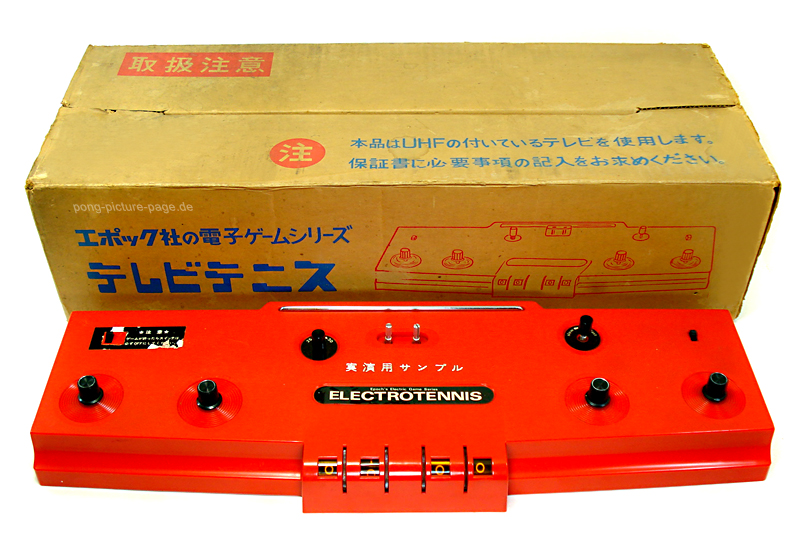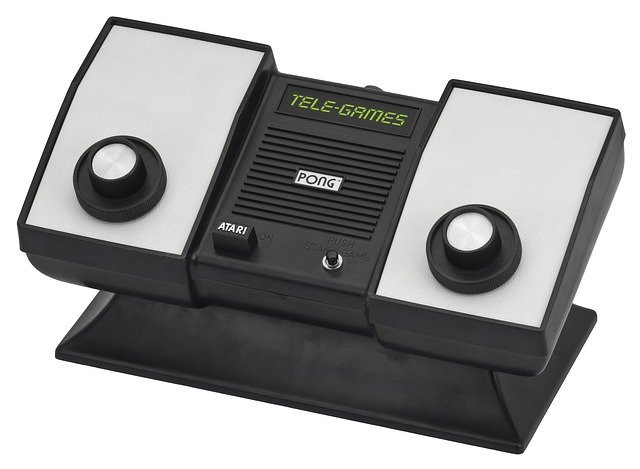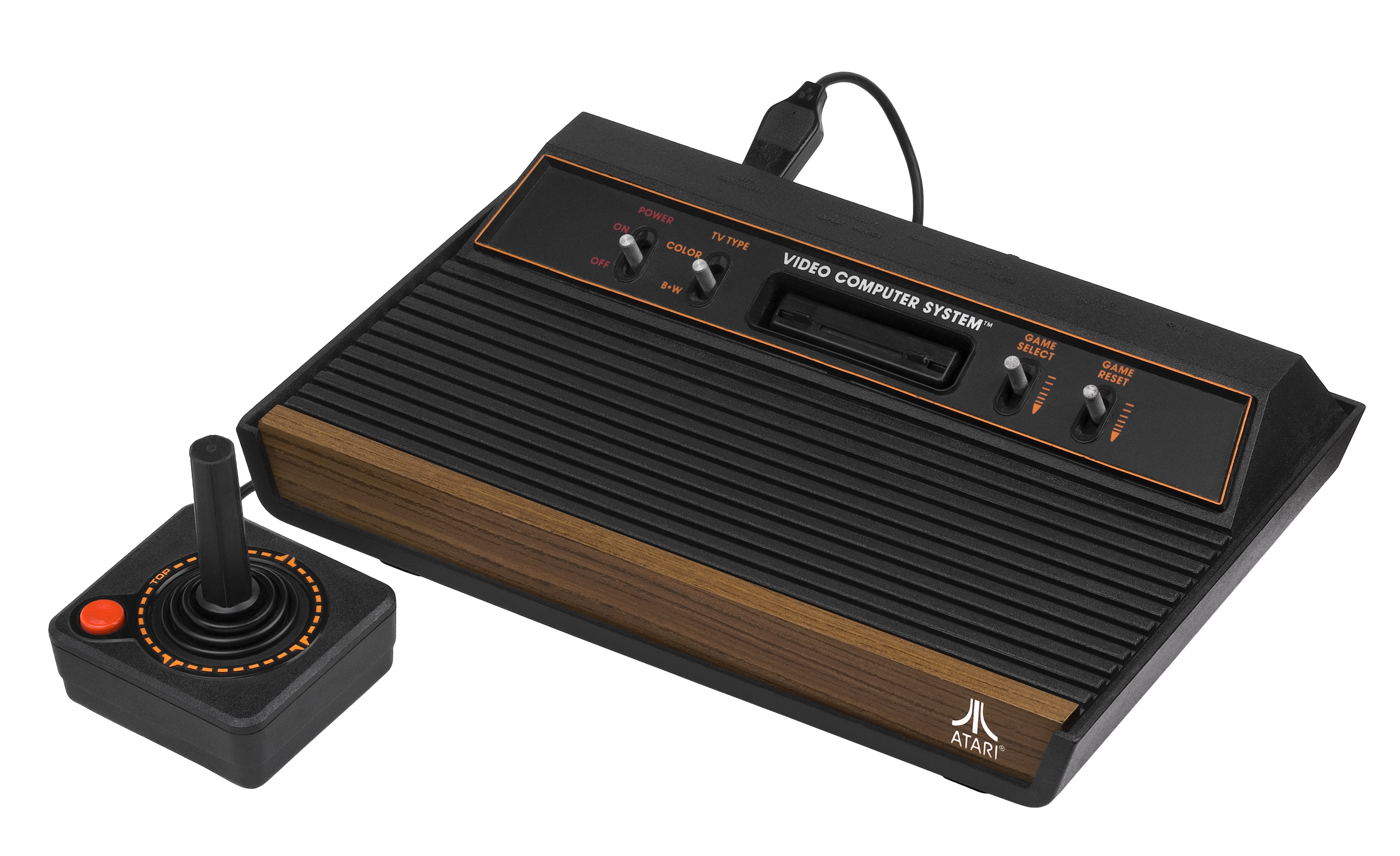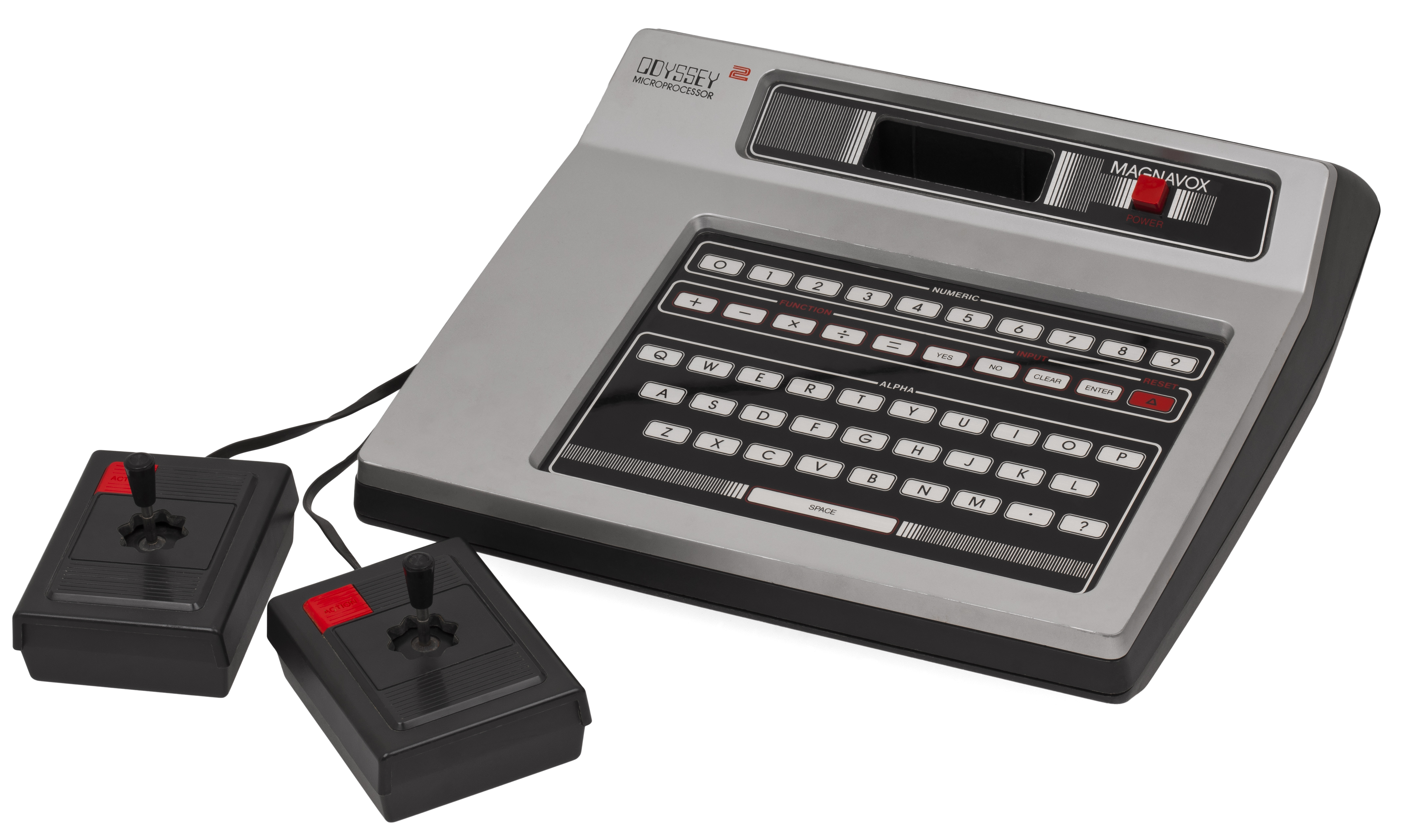In my last post, I talked about some tips for starting a collection of video games. As much as I stressed that video games are more important than the consoles, you still need them to actually play the game.
The first video game consoles were made back in the 70s, before many of today’s gamers were even born. While these old game systems are ancient compared to what we have today, there are still some who may be interested in collecting these consoles.
And so, for today’s post, I will be talking about the video game consoles in the 70s. I will talk a bit about the honorable mentions, a little blurb on their history, and perhaps where one may be able to find them or their games.
How it Got Started
I’ll be talking more in depth about the history of video games in a future post, so for now, here is a quick blurb on how things got started.
It all began in 1951 when Ralph Baer, an inventor, came up with the idea of building an “interactive” TV set. But it wasn’t until around 1966 that he began actually designing and building his idea.
The end result was called the “Brown Box”, a device which could be wired up to a TV, and displayed very simple graphics on the screen. This box also had 2 box-shaped remotes with knobs that would control objects on the screen.

Baer tried getting his device pitched to many companies, and he eventually found a buyer in Magnavox, an electronics company. Soon afterwards, the Magnavox Odyssey was released in 1972, the first of the video game consoles.
The first generation of video game consoles were so archaic compared to what we enjoy today. Perhaps the most distinct feature of the first gen was that these consoles were “dedicated consoles”. As in, the video games themselves were hardwired into the system; there were no cartridges that could be used to play new games. The graphics were nothing fancy, consisting of dots, lines and blocks showing up on a single screen, and there was little to no audio for these consoles.
The second generation of game consoles started in 1976 with the release of the Fairchild Channel F, a console that was the first to feature swappable cartridges that allowed consumers to play different games. This is the feature that pretty much set it apart from the first generation, and the first generation consoles became obsolete as a result.
The First Generation Consoles
To be honest, there were actually hundreds of different game consoles manufactured out there that were first gen systems. Since this was a new technology, it seemed that every company out there wanted to take advantage of this new opportunity, and soon enough, we had a huge market of consoles with identical names and games; a lot of them apparently ripped off Pong.
Below, you will only see the most well-known first gen consoles, because I would be here forever typing if I had to include the hundreds of others out there.
Magnavox Odyssey (1972)

Here it is, the very first ever console made commercially available! It even came out before Pong ever did. When it first hit store shelves, it had a price tag of about $100, which in 2020 would be worth about $600. It could only play 12 games in total.
This console was made using 1950s technology. As in, a number of transistors, diodes, resistors, and capacitors were wired together to make a circuit, which would display a picture on the TV screen. The picture would change depending on the input from the 2 controllers, each of which had 3 knobs and a reset button. In order to play different games, the console had special cartridges which, when connected to the machine, would modify the input and internal circuits to display a different picture.
Fun fact: the Odyssey could be powered by C Batteries, instead of a power cord.
The console had originally started selling well, but because people incorrectly thought the Odyssey could only work on Magnavox TVs, they didn’t make quite as much as expected.
Not gonna lie, because this is among the oldest consoles made, you might have a hard time finding it out in the wild. You probably might only find it from a collector, and even then, not for cheap. I managed to find one on eBay at one point, but be wary of widely fluctuating prices.
TV Tennis Electrotennis (1975)

This was the first console ever released in Japan, even before Sega and Nintendo got their first start in the game industry. The TV Tennis Electrotennis was released by Epoch, a Japanese toy company who partnered with Magnavox to make this machine.
This console only had one game, a simple tennis game. Hence the name.
One thing that made this console stand out was the fact that it connected wirelessly to a TV using a UHF radio antenna. You know, those TV antennas you see on really old houses out in the country?
Another fun fact: when Nintendo first started designing the NES and the Famicom, they actually thought of using this kind of technology, but because it would have been expensive, the idea was scrapped. This might be why the Electrotennis did not sell well, only selling about 20 000 units. That and the single tennis game.
I had no luck finding this console anywhere. Granted, this product was only released in Japan, so it is not likely that it will be found this side of the pond. You could always check out eBay to see if anything comes up.
Atari Home Pong (1975)

Atari had a great deal of success when they first released their arcade classic Pong in 1972. And so it is probably not surprising that they would end up making a home console version of their game at one point.
The Atari Home Pong console was built using a high performance computer chip that at the time, would have made it the most powerful consumer product. Which was a bit of overkill in my opinion, considering that it could only play one game.
This special chip made the console expensive to manufacture, and as a result, Atari had a hard time finding a distributor. But eventually, Atari collaborated with Sears to release the home console version of Pong. It sold about 150,000 units.
As with all of the above-mentioned consoles, they can be hard to find in the wild, but there seem to be a few on eBay the last time I checked. Otherwise, if you are looking for an alternative way to play Pong, you can always check out the Atari Pong mini-arcade.
Coleco Telstar series (1976)

The Coleco Telstar series is, as its name suggests, a series of 14 different game consoles, all designed to play a number of games on each. It was made by Coleco, a company that would eventually release the ColecoVision. Fun fact: Coleco also is the company behind the Cabbage Patch Kids!
Most of the Telstar consoles made were designed to play simple tennis and hockey games, similar to Pong, but some also came with other special controllers made for playing different kinds of games.
In fact, one of them came with a light gun attachment, much like the NES Zapper that wouldn’t come out until years later. Back in those days, there were no laws against how toy guns were allowed to look, so the light gun for the Telstar looked just like a real life revolver.
You might be able to find the various consoles on eBay.
Color TV-Game series (1977)

Another Japan exclusive, the Color TV-Game is a series of 5 consoles. Just as with other first generation consoles, each one in the series was designed to play a single type of game. This series of consoles were the highest selling in the entire first generation of game consoles, with their sales in the millions.
I should also add that this is one of the very first game consoles made by Nintendo! Before they saw success in the video game industry, Nintendo was originally in the business of making toys and playing cards. But when video games started becoming more popular, it wasn’t long until Nintendo saw the potential for video games as a profitable industry.
Since the Color TV-Game was only released in Japan, you might have a hard time finding this one out in the wild as well. Luckily, we have eBay to help us out with that.
The Second Generation Consoles
As I mentioned above around the start of this post, the most distinguishing feature of the 2nd generation consoles was the simple fact that they could now play different games by using swappable cartridges. These consoles were made with a microprocessor, a computer chip that allowed consoles to use cartridges, and it was through this piece of technology that we would soon use to make even better electronics and computers. If technology didn’t go the route of integrated circuits and chips, we would probably still be using appliances and electronics that wouldn’t look out of place in a Fallout game.
There were a total of 21 game consoles made during the second generation. Could you imagine seeing all of those in your TV room? I wouldn’t, which probably explains how the crash of 1983 got started.
Below, you will find the honorable mentions that came out in the 70s. I will talk about 80s consoles in a future post.
Fairchild Channel F (1976)

The “F” stands for Fun. The first of the second generation of game consoles, the Fairchild Channel F has the distinction of being the very first console to not only be made with a microprocessor, but also have swappable game cartridges. If you have ever watched High Score, the Netflix docu-series, you’ll also recognize this console as the one whose technology was pioneered by Jerry Lawson, an African-American computer engineer.
Apart from having an unusual controller that reminds me of the Bop It! toy, this console was also the first ever to feature a pause feature. The console even had its own speakers from which gameplay would sound, instead of through the TV itself. Despite this one being the first out of the gate, the console failed to sell a lot once the Atari 2600 came out. Most of the Fairchild Channel F’s library of about 26 games were mostly educational games, and when compared to the action-packed games of the Atari 2600, it seems that consumers preferred the latter.
Atari 2600 (1977)

Here is the one that made it big! After doing so well in the arcade game market, Atari decided to develop a home console of their own to keep costs down. Apart from its iconic look, the controllers could be removed from the console, which allowed Atari to allow for other kinds of controllers and accessories.
One of the big factors to this console’s success was that Atari held exclusive rights to many of the popular arcade games at the time. As a result, they could port these games onto the Atari 2600, the most successful being Space Invaders. This was also where Atari began the tradition of game companies producing licensed games, or rather, games that were adapted from movies, the most infamous being E.T. the Extra-Terrestrial.
Sadly, all of the success of the Atari 2600 would come to a crashing halt, when some really poor business decisions from the company resulted in losing out on a lot of money, popularity, and loyalty from consumers. This crash took place in 1983, and Atari never fully recovered.
Bally Astrocade (1977)

An interesting console that was only available via mail order. Unsurprisingly, not very many people are familiar with it. In fact, the consoles weren’t even shipped until the year after they were available for order. The console itself was designed by Midway, which at the time was owned by Bally Manufacturing.
It even had a calculator built in alongside other features. Perhaps one big standout feature it had was its graphics. The machine had the ability to display game graphics in low-resolution mode, or a high-resolution mode (a whopping 320 × 204 pixels at the time!). Now, that resolution might be small potatoes compared to what we have nowadays, but back then, computer memory just wasn’t fast enough to take advantage of this feature.
The game featured about 28 games in its library. As with many other consoles of this generation, the Astrocade quickly went extinct following the video game crash of 1983.
Odyssey² (1978)

The successor to the original first console, the Magnavox Odyssey² is another console designed with a microprocessor. But unlike other consoles of this era, it also came with other features.
First off, it had a built-in keyboard, which suddenly made it seem like a cross between a computer and a game console. The keyboard was used for educational games; it even had a game that teaches you how to program.
It also had a speech synthesis unit. Something never seen in a console before, it was used with a few games. Another big thing that set it apart was the way it combined board games and video games into one, where some games actually came packaged with a game board and pieces that they could use alongside the video game.
In spite of the stiff competition of Atari, the Odyssey² still managed to sell about 2 million units over the course of its life, before the crash of 1983 pretty much caused them, among others, to fade away.
Intellivision (1979)

Since the Atari 2600 had a lot of success in their game console, it only made sense for more companies to jump on the bandwagon. Mattel, another toy company, decided to join in with their own console, the Intellivision. This console had the honor of pioneering many innovations that would eventually end up a standard for game consoles to come.
Let’s start with the hardware. It is the first console to be made with 16-bit hardware, in a day and age far before we had the SNES and the Sega Genesis. The Intellivision’s controller was also the first one ever to use a directional pad instead of a joystick.
The Intellivision was also the first console to use downloadable content… sort of. An online service known as PlayCable, allowed for customers to use their TV cable companies to download video games to their consoles.
It was also the first console to make use of a tileset in their games. A tileset is a large grid of images which are used in game development to create levels and playing areas in a game. This allowed the console to display game graphics that were far better than the Atari 2600, something that helped make the Intellivision one of the few consoles to compete as Atari’s rival.
Since Atari had a bit of a monopoly when it came to the rights to port arcade games to the Atari 2600, Mattel had a lot of trouble getting games onto their own console. As a result, the Intellivision had licensed games in their library.
As usual, you can usually find the original console on eBay. But if you are looking for a modern remake, there is the Intellivision Flashback. It is a fairly faithful recreation of the original, complete with 60 built-in games.
And that’s about all I could find on the most notable game consoles of the 70s. Since this decade was when everything got started, there’s probably way more that I could talk about. That being said, in my next post, I will be delving into some of the most popular video games of the 70s, and maybe even the arcade games as well. And once I’ve explored all I could find, I might even explore the game consoles of the 80s and so on…
Thank you for reading, and happy gaming, as always!
~ Ken
